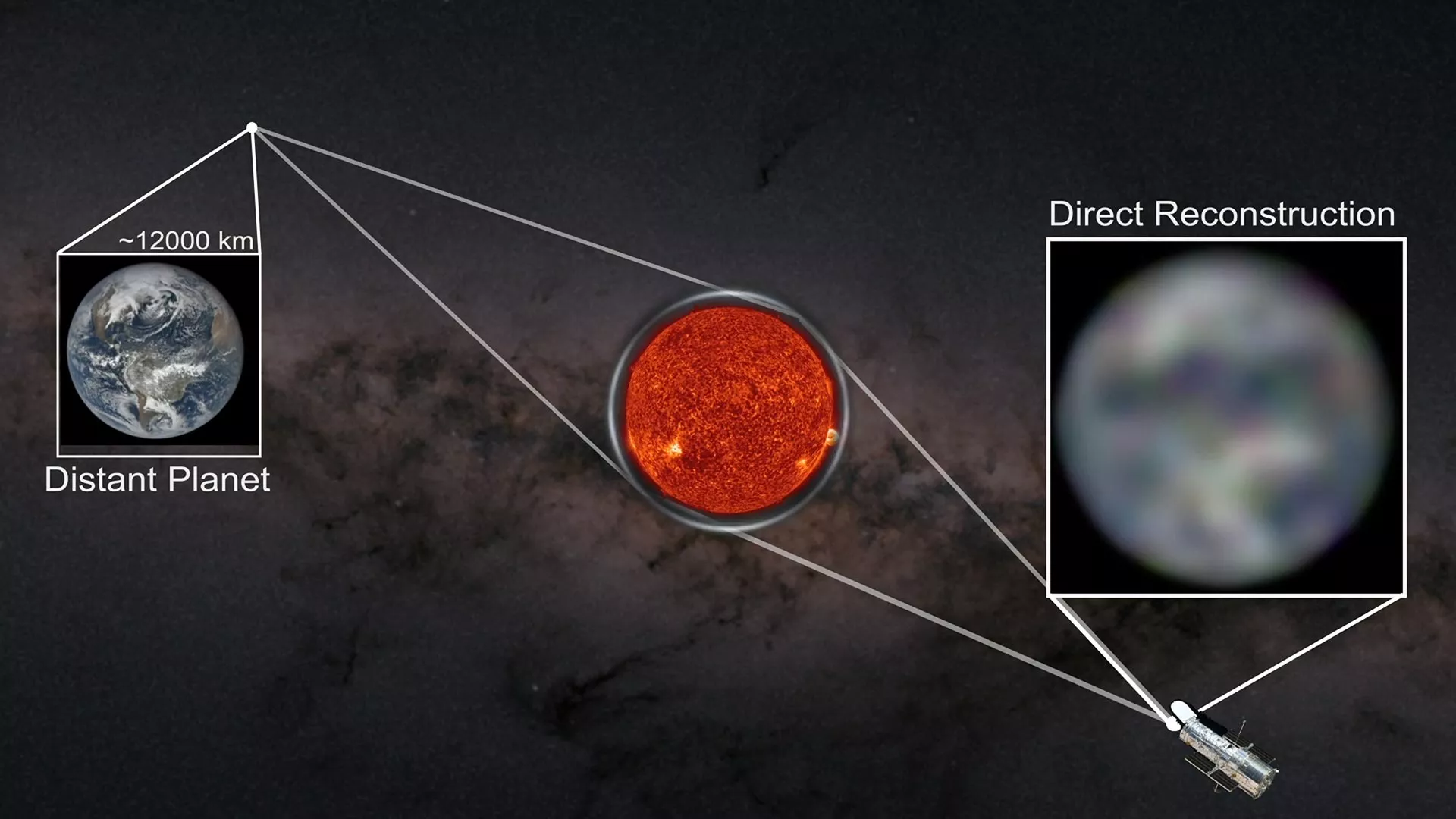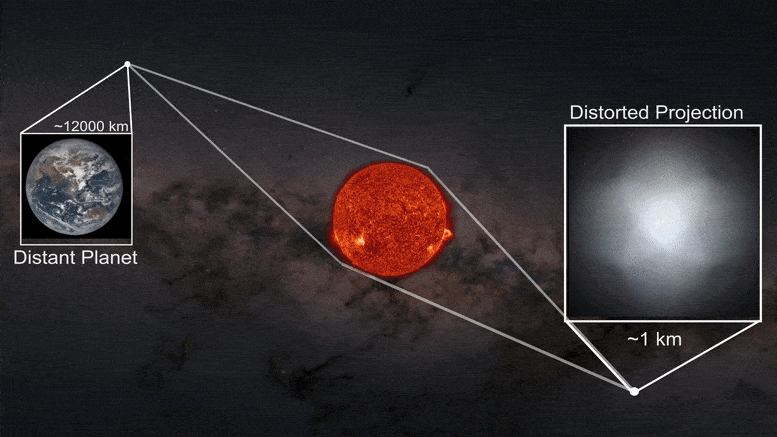A Future "gravity Telescope" Technology Conceived By Astrophysicists At Stanford University Can Make Astronomical Imaging More Advanced Than Any Technology Today. Since The Discovery Of The First Exoplanet In 1992, Astronomers Have Found More Than 5000 Planets Orbiting Other Stars. However, We Know Relatively Little About Them: We Know Its Existence And Some Of Its Characteristics, But The Rest Is A Mystery.
To Avoid The Physical Limitations Of Telescopes, Astrophysicists At Stanford University Have Been Developing A New Conceptual Imaging Technology That Will Be 1000 Times More Accurate Than The Most Powerful Imaging Technology Currently Used. By Using The Distortion Effect Of Gravity On Space-time, The So-called Gravitational Lens, Scientists Have The Possibility To Manipulate This Phenomenon And Create More Advanced Imaging Than Any Technology Currently Available.
In A Paper Published Today (May 2, 2022) In The Journal Of Astrophysics, Researchers Describe A Method Of Manipulating The Solar Gravitational Lens To Observe Extrasolar Planets. By Putting The Telescope, The Sun And Exoplanets On A Line With The Sun In The Middle, Scientists Can Use The Gravitational Field Of The Sun To Amplify The Light Emitted By Exoplanets As They Pass By. Compared With The Magnifying Glass, It Has A Curved Surface To Bend The Light, And The Gravitational Lens Has A Curved Space-time, Which Can Image Distant Objects.
An Example Of Reconstructing An Image Of The Earth Uses A Solar Gravitational Lens To Project A Halo Around The Sun. The Algorithm To Realize This Reconstruction Can Be Applied To Exoplanets To Obtain Better Imaging.
Professor Of Physics, Stanford University School Of Humanities And Sciences Bruce Mackintosh, Deputy Director Of The Kafuri Institute Of Particle Astrophysics And Cosmology (kipac), Said: "we Want To Take Pictures Of Planets Orbiting Other Stars As Well As Pictures Of Planets In Our Own Solar System. With This Technology, We Hope To Take A Picture Of A Planet 100 Light-years Away, Which Has The Same Influence As The Earth Taken By Apollo 8."
The Current Problem Is That The Technology They Propose Will Require More Advanced Space Travel Than At Present. However, The Researchers Say That The Prospect Of This Concept And The Situation Of Other Planets It May Reveal Make It Worthy Of Further Consideration And Development.
The Benefits Of Bending Light
The Gravitational Lens Was Not Observed Experimentally Until The Solar Eclipse In 1919. Because The Moon Blocks Light From The Sun, Scientists Can See That The Stars Near The Sun Deviate From Their Known Positions. This Is Clear Evidence That Gravity Can Bend Light, And It Is Also The First Observational Evidence That Einstein's Theory Of Relativity Is Correct. Later, In 1979, Stanford University Professor Von Eshleman Published A Detailed Description Of How Astronomers And Spacecraft Use The Solar Gravitational Lens. (at The Same Time, Many Astronomers, Including Kipac At Stanford University, Now Often Use The Strong Gravity Of The Largest Galaxies To Study The Early Evolution Of The Universe).
But It Was Not Until 2020 That This Imaging Technology Was Explored In Detail To Observe Planets. The Tuscheva Institute Of Technology Uses A Large Amount Of Light To Reconstruct A Clear Image Of The Planet Around The Rocket Propulsion Laboratory Of The California Jet Science And Technology.
Depict The Dynamics Of This Conceptual Exoplanet Imaging Technology Compared With Existing Imaging Ideas.
Based On Turyshev's Work, Kipac Doctoral Student Alexander Madurovic Invented A New Method To Reconstruct The Surface Of A Planet From A Single Image Looking Directly At The Sun. By Capturing The Halo Formed By Exoplanets Around The Sun, Madurovich's Algorithm Can Eliminate The Distortion Of The Halo By Reversing The Bending Of The Gravitational Lens, So As To Turn The Halo Back Into A Circular Planet.
Madurovic Demonstrated His Work By Using Images Of The Rotating Earth Taken By The Satellite Dscovr Between The Earth And The Sun. Then He Used A Computer Model To Observe What The Earth Would Look Like Under The Distortion Of The Sun's Gravity. By Applying His Algorithm To Observations, Madurovic Was Able To Restore The Image Of The Earth And Prove That His Calculation Was Correct.
In Order To Capture Images Of Exoplanets Through The Solar Gravitational Lens, A Telescope Must Be Placed Farther Than Pluto, Beyond The Edge Of Our Solar System, And Farther Than Any Spacecraft That Humans Have Ever Sent. However, This Distance Is Only A Tiny Fraction Of The Light-years Between The Sun And Extrasolar Planets.
"By Unraveling The Light Bent By The Sun, We Can Create Images Far More Than Ordinary Telescopes," Madurovic Said. "Therefore, Scientific Potential Is An Untapped Mystery Because It Opens Up This New Observation Capability That Does Not Yet Exist."
The Goal Is Set Outside The Solar System
At Present, In Order To Image An Exoplanet With The Resolution Described By Scientists, We Need A Telescope 20 Times Wider Than The Earth. Of Course, This Is Impossible. By Using The Sun's Gravity Like A Telescope, Scientists Can Use It As A Huge Natural Lens. A Hubble Sized Telescope Combined With A Solar Gravitational Lens Is Powerful Enough To Image Exoplanets And Capture Fine Details Of The Surface.
"The Solar Gravitational Lens Opens Up A New Window For Observation, Which Will Be Sufficient To Investigate The Detailed Dynamics Of The Planetary Atmosphere And The Distribution Of Cloud And Surface Features, Which We Can't Investigate Now," Madurovic Said
However, According To The Current Level Of Aerospace Development, It Will Take Mankind At Least 50 Years To Deploy This Technology, Which Is Likely To Be Longer. In Order To Adopt This Technology, We Need Faster Spacecraft. If Calculated With Today's Most Advanced Vehicles, It May Take 100 Years To Reach The Lens. Using Solar Sails Or The Sun As Gravitational Slingshots Can Take As Short As 20 Or 40 Years. Although The Timetable Is Uncertain, The Possibility Of Seeing Whether Some Exoplanets Have Continents Or Oceans Is Always Their Driving Force. The Existence Of Both Is A Powerful Indicator That Life May Exist On A Distant Planet.
"This Is One Of The Last Steps To Find Out Whether There Is Life On Other Planets. By Taking Pictures Of Another Planet, You Can See The Green Patches As Forests And The Blue Spots As Oceans - With These, It's Hard To Say It's Lifeless."



